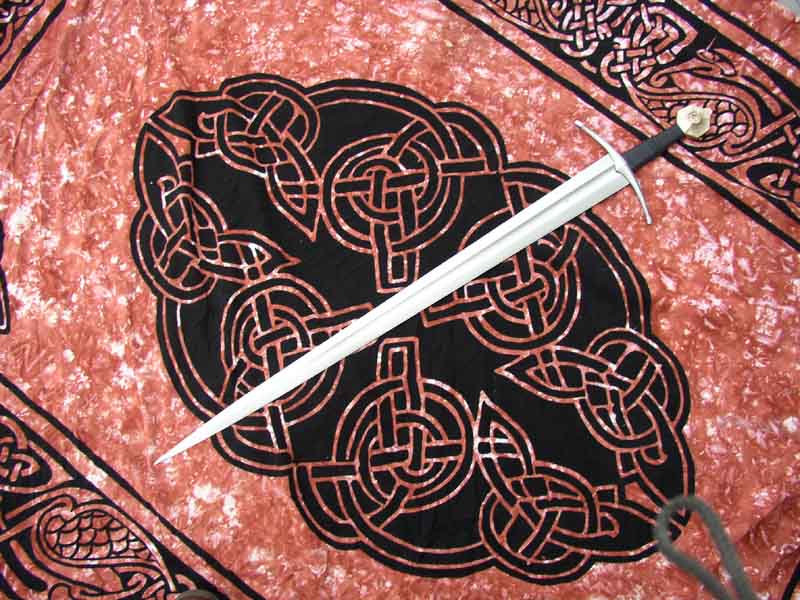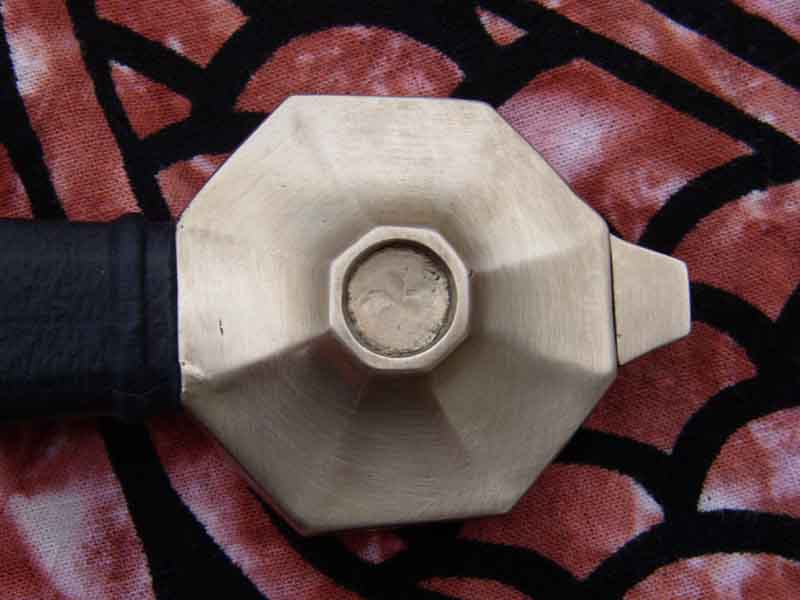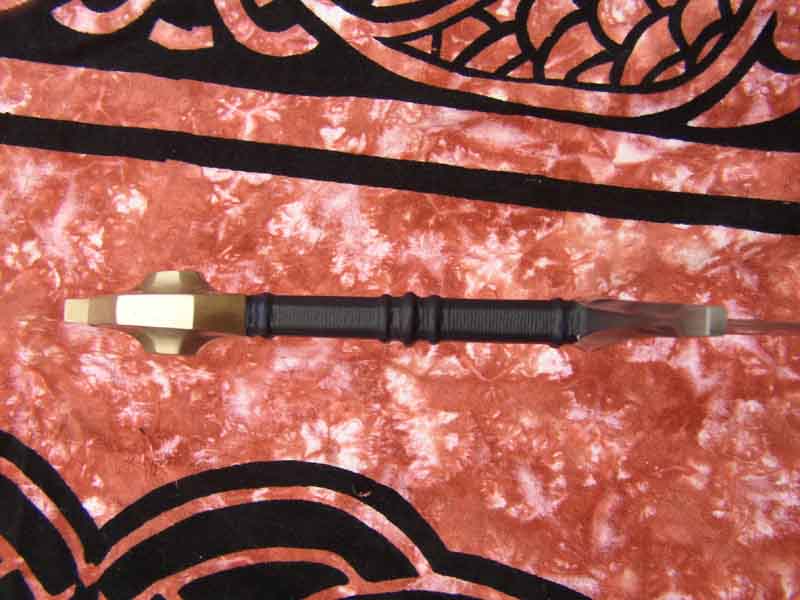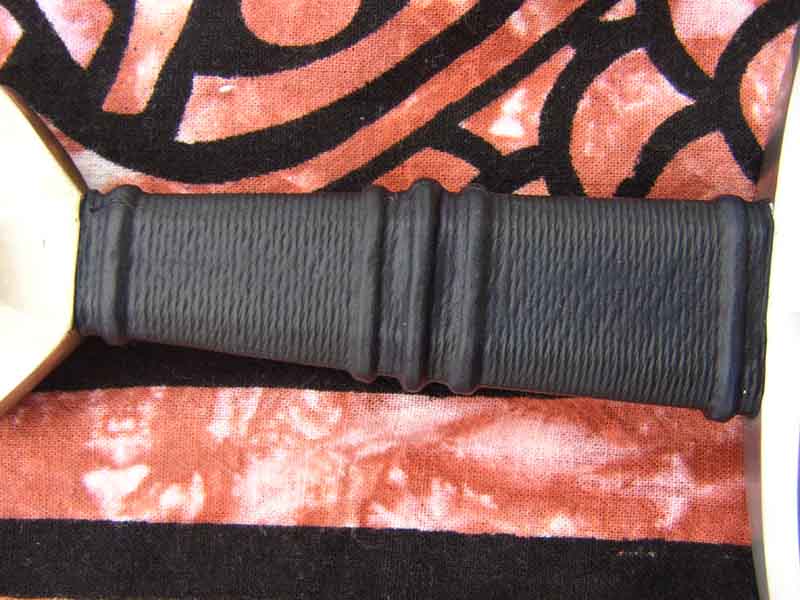My Next Gen Prince arrived today, and I thought I'd give you a quick review. I can't compete with the great reviews on this site, but here's my humble offering:
Introduction
The 14th Century is perhaps the period during which the arms and armour of the knightly class underwent its most dramatic transformation. At the beginning of the century, a knight was armoured almost entirely in mail with, perhaps, a simple coat of plates covering the torso, and small plates coving the knee. By the end of the century, the knightly class was to be covered almost entirely in plate armour. This change had its effect on the less well off as well. Improved industrial process allowed armour production to begin at an almost industrial scale in the major armouring centers, allowing mail and even the newly developed plate armour into the hands of a developing professional, but non-noble, soldiering class.
Naturally, the increase in armour on the battlefield directly affected the effectiveness of the weapons used against it. The swords used until this point had largely been focused on the cut. The thrust was sometimes supported, but always subordinated to the cut. But cutting swords do not penetrate mail or plate well, if at all. If mail had to be penetrated, better by far to use a thrust. Or better yet, a thrust to a small, unarmoured area.
Thus at the end of the 13th Century, we begin to see swords better designed to delivering a powerful thrust; Perhaps even powerful enough to penetrate mail on occasion. The type of sword classified by Ewart Oakeshott as Type XVI is one such sword.
The Type XVI is a "cut and thrust" sword. It is still designed to deliver a powerful cut, but the tip is very acutely pointed and has a strong diamond cross-section to support thrusting. Oakeshott identifies the period of its greatest popularity as being from 1300-1350, though he remarks that individual examples might have been seen on a battlefield 100 years later.
Overview
The Prince is the second sword in Albion Armorers' revolutionary Next Generation Line to use a Type XVI blade. The first is The Squire, based on the same blade, but with simpler fittings. The Prince was designed as a more ornate version of this type, with a subtly complex guard (an Oakeshott Type 8 variant) and a lovely faceted wheel pommel of bronze (Oakeshott type I1). The faceted grip completes the elegant appearance.
The combination of Peter Johnsson's detailed historically-based design work and Albion's combination of rapid production techniques and hand finishing mean that we, the sword enthusiasts, get to handle the most accurate recreations of medieval swords yet created on a production basis. The Prince is another fine example of this.
Fit and Finish
Fit and Finish is one the trickier aspects to modern replicas. On the one hand, the sword must be finished to the point that excellent craftsmanship and high quality standards are apparent. On the other hand, the sword must not be finished too perfectly, or it has a sterile feeling, with any organic nature that makes the sword feel "real." Albion has struck a wonderful balance with the Prince.
Overall, the proportions of the sword are quite attractive. It is evident from the beginning that this sword means business. It is light and lively in the hand, yet leaves no doubt that it is a tool intended for killing. At the same time, the elegant hilt components draw attention to the fact that swords were more than mere weapons; they were a statement of the owner's status and wealth.
The hilt components are cast; the guard of steel and the pommel of bronze. The guard casting is flawless. No signs of pits at all, and only the merest suggestion of grind marks. The pommel casting is very clean with only a few, barely noticeable pits. This pommel has a recessed center. It is less finished than the rest of the pommel, showing some minor tool marks on one side. Overall, this gives a contrast effect that is appealing to me, though some might prefer a bit of polish there. The rivet block is even and cleanly finished. One very interesting feature of this pommel is that it gets thinner towards the top. This adds a nice bit of additional visual detail.
The grip is amazing. It is slightly thinner than I expected, but feels very right in the hand. The cording below the leather gives a nice texture to it and the risers really assist in securing the hand on the grip without feeling uncomfortable. I asked Albion for a nice dark blue grip and they delivered with a dark even blue that is a bit different from generic black, but without drawing attention from the sword itself. The seam is nearly invisible, confirming Albion's reputation for the best grip wraps in the business.
The blade is simply lovely. It is fairly wide at the base and tapers smoothly to the COP, with an accelerating taper after this. The point is strong and needle sharp. The fuller is well marked and tapers until it fades out about 9 inches from the tip. One comment here is that the very end of the fuller taper is slightly uneven and is not quite centered on the ridge of the blade. This occurs on both sides leading me to believe this is due to the finishing technique used. However, this effect is barely noticeable as the fuller is barely existent at this point. Another small flaw to note is that the blade ridge on one side on the blade wavers very slightly. Again, this is barely noticeable. The blade has a nice level of polish: shiny enough to be attractive, but not so mirror-like as to look cheap. I'd also like to remark on Albion's Next Generation makers mark. It is a very nice mark, particularly for a sword of this design. It looks great in the fuller too.
Handling Characteristics
I should point out that I am not a cutter. I only very casually cut with my sharps, so I am, perhaps, not the best one to remark on handing qualities. Never the less, I feel an obligation to discuss the handling of this sword in some way. With a COG of 4.6" below the top of the cross, the sword handles sprightly, the point going right where you want it with ease. However, the sword still feels authoritative in the swing. An excellent example of cut and thrust design. I did do some light cutting on a double-corrugated "wardrobe" box left over from my move. The sword made light work on the box with very casual swings.
Conclusion
If Albion's goal was to deliver a fine example of a transitional cut and thrust sword with drop-dead good looks, they certainly succeeded with The Prince. The sword has already become the centerpiece of my humble collection. Far more than simply looking the part, the sword feels every inch a real piece of history. Who could ask for more than that?
Michael Smith





